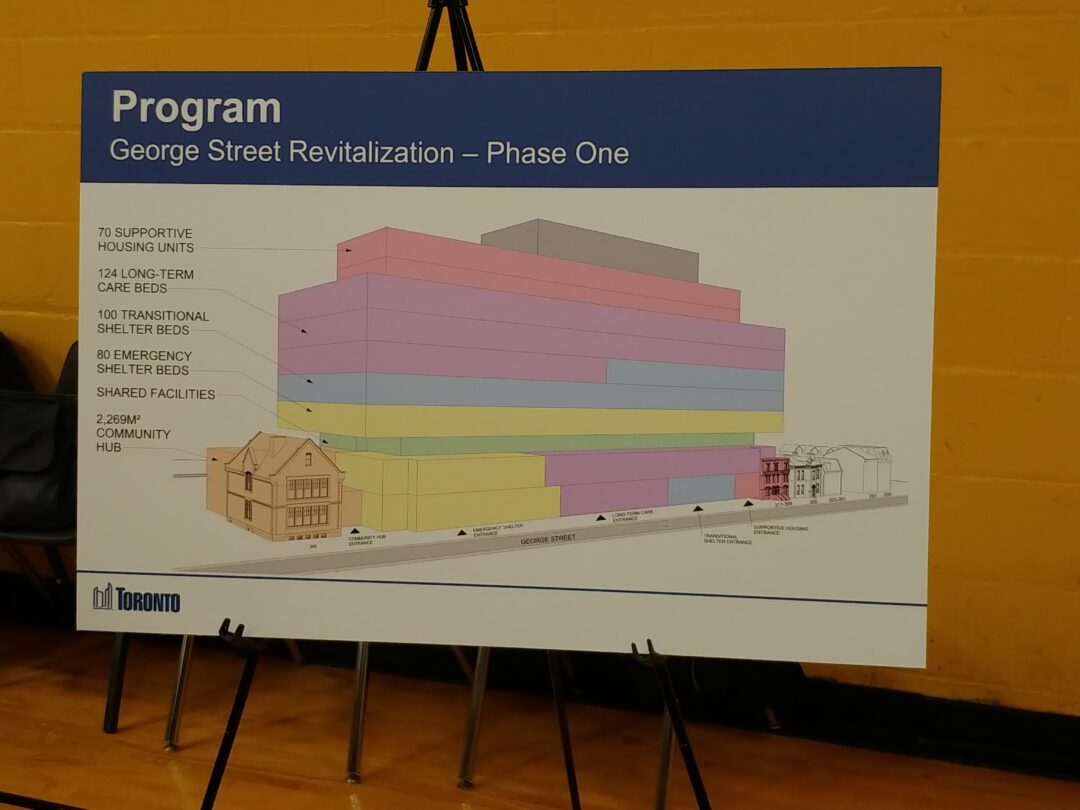Ariel Tozman –
Over 80,000 Ontarians experienced homelessness in 2024, paralleling “deep gaps in healthcare, mental health services, justice systems, and more,” said a recent report by the Association of Municipalities of Ontario (AMO). It shows homelessness disproportionately affected Indigenous people, children and youth, as well as refugees and asylum seekers.
Homeless people who rely on the emergency shelter system for extended periods face heightened risks of trauma, violence, worsening health outcomes and loss of life.
“[Toronto’s] shelter system is essentially not functioning,” said Mark Aston, executive director of Covenant House, a social agency that serves homeless and vulnerable youth. On average, 233 shelter intake callers don’t find a bed every day, municipal data shows.
An increasing number of refugees are entering the “homelessness response system” in Ontario’s urban centres, according to the report. After Toronto began turning refugee claimants away from the strained shelter system in 2022, an investigation by the Toronto Ombudsman published in December found that city staff turned asylum seekers away even when beds were available — amounting to anti-Black racism.
Building more affordable and supportive housing is essential to ending chronic homelessness, the AMO report said. More than 268,000 households in Ontario are on waiting lists, with average wait times exceeding five years.
Shelter and support services are concentrated in urban centres, leaving significant infrastructure gaps. In northern Ontario, homelessness grew by 204% from 2016 to 2024.
Aston said the provincial government should “step up” for young people struggling with trauma, stress and anxiety. “If they receive the right type of services, they can really get a lot better. They can start to plan their own lives, they can start to take charge of their own lives and move into the community in a more independent way.”
Ontario is responsible for organizing, funding, and delivering mental health and addiction services. But all three levels of government need to make homelessness “rare, brief, and non-recurring,” the report concluded, positing a $11 billion investment over 10 years. A “bold and coordinated” investment would create 75,000 new housing units and improve outcomes in health, justice, immigration settlement, education and financial support.
Emma Testani, press secretary for the Municipal Affairs and Housing Minister Paul Calandra, said the provincial government is investing $3 billion in affordable housing, anti-homelessness, and emergency shelter support over the next three years.
“We have heard loud and clear from the people of Ontario that they want their parks and public spaces back,” Testani said, apparently referring to tent encampments. “We believe that people experiencing homelessness should have access to proper support and stable housing,” she said.
A city report indicates Toronto’s shelter system is the largest in Canada, supporting more than 12,000 individuals. But “we need to create long-term, stable housing,” said Toronto Centre MPP Kristyn Wong-Tam. “Different forms such as transitional, supportive housing are absolutely critical.”
Toronto’s 10-year ‘HousingTO’ action plan aims to build 65,000 rent-controlled homes. The city is also looking to expand health and addiction-related supports in large shelters following the Ford government’s decision to close some supervised consumption sites, which is “expected to place further strain on remaining resources.”
City data shows Toronto Centre (Ward 13) is home to about two-fifths of Toronto’s homeless shelter and response sites and six of the city’s 10 fixed supervised consumption services.
Wong-Tam said the province needs to adopt an official strategy to end homelessness with “specific actions, targets, and timelines,” following the example of British Columbia NDP government’s “Belonging in BC” homelessness plan, released in 2023. The province hopes to transform housing and health systems and ensure that service delivery includes input from people with distinct needs.
“Ontario is the largest landowner in Canada, so, you know, the lands are there. We just need to get capital,” Wong-Tam said. “It has been done successfully in our beautiful community of Regent Park, and we can do this again.”




